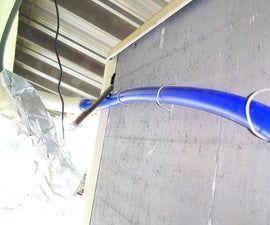
How to make an air conditioner?
Creating an air conditioner from scratch requires a combination of technical knowledge, mechanical skills, and access to the necessary materials. While it may seem like a daunting task, it is possible to build a basic air conditioning system with some effort and careful planning.
To begin with, you will need a few key components. The heart of the air conditioner is the compressor, which is responsible for compressing and circulating the refrigerant. You will also need an evaporator coil, a condenser coil, a fan, and a refrigerant. Additionally, you will require copper tubing, insulation material, and various tools such as wrenches, tubing cutters, and a soldering iron.
Start by designing the layout of your air conditioner. Determine where you want to place the evaporator coil, which is responsible for cooling the air. Usually, this is located indoors, such as in a window or a central air handler. The condenser coil, which releases heat, should be positioned outside. Make sure to plan for proper airflow and consider the length of copper tubing required to connect the coils.
Next, you'll need to install the coils. Begin with the evaporator coil, ensuring that it is securely mounted and properly aligned. Connect the copper tubing to the coil, taking care to solder the connections and ensure there are no leaks. Insulate the tubing to prevent condensation and energy loss.
Once the evaporator coil is in place, move on to the condenser coil. Mount it securely outside, and connect it to the compressor using the copper tubing. Just like with the evaporator coil, solder the connections and insulate the tubing.
After the coils are installed, it's time to connect the compressor. Follow the manufacturer's instructions to properly mount the compressor and connect it to the condenser coil. This step is crucial, as the compressor is responsible for circulating the refrigerant and maintaining the cooling process.
Next, install a fan near the condenser coil to enhance heat dissipation. The fan will help draw air over the coil, allowing it to release heat more efficiently. Make sure the fan is positioned correctly and securely mounted.
Now it's time to add the refrigerant to the system. Consult the manufacturer's guidelines to determine the appropriate type and amount of refrigerant for your air conditioner. Carefully charge the system, ensuring there are no leaks and the refrigerant is at the recommended pressure.
Once everything is in place, it's time to test your air conditioner. Connect the power supply and turn on the system. Listen for any unusual noises or vibrations, and check for proper cooling. Monitor the system for a while to ensure it operates smoothly and effectively.
Remember that building an air conditioner from scratch requires a good understanding of the principles behind air conditioning systems. It is crucial to follow safety precautions, consult expert resources, and consider professional advice if needed. Additionally, note that creating a complex, efficient air conditioner may be beyond the scope of a DIY project and may require professional assistance.
Building an air conditioner can be a rewarding project that teaches you about the inner workings of these cooling systems. While a DIY air conditioner may not match the performance of commercial units, it can still provide some relief during hot days. So, gather your tools, materials, and knowledge, and embark on the adventure of building your own air conditioner. Stay cool!